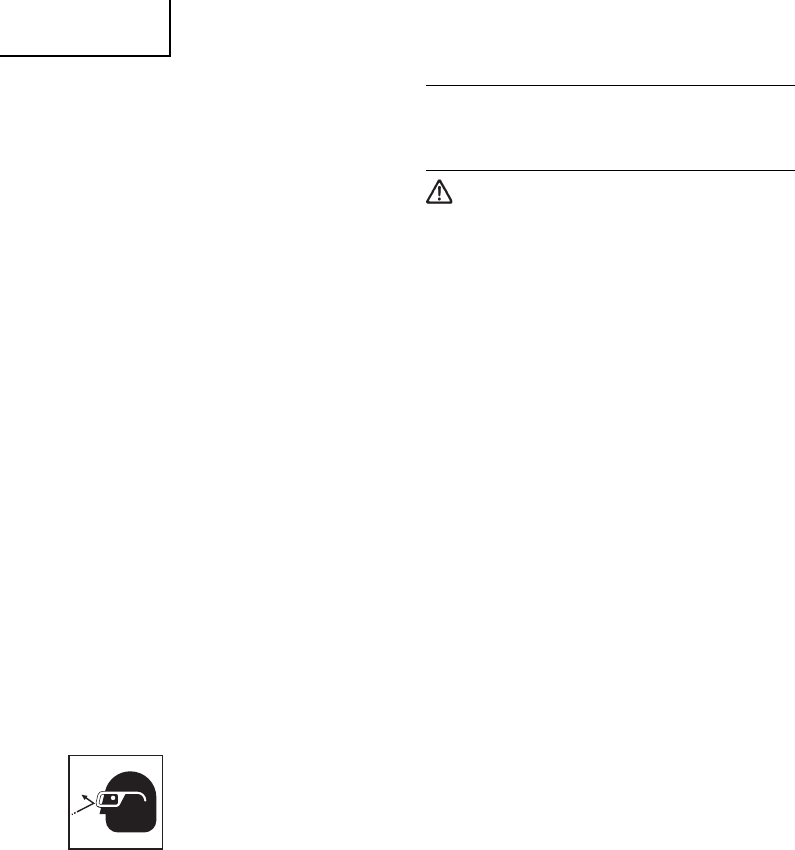
6
English
13. Keep all screws, bolts and covers tightly in
place.
Keep all screws, bolts, and plates tightly
mounted. Check their condition periodically.
14. Do not use power tools if the plastic
housing or handle is cracked.
Cracks in the tool’s housing or handle can lead
to electric shock. Such tools should not be used
until repaired.
15. Blades and accessories must be securely
mounted to the tool.
Prevent potential injuries to yourself or others.
Blades, cutting implements and accessories
which have been mounted to the tool should be
secure and tight.
16. Never use a tool which is defective or
operating abnormally.
If the tool appears to be operating unusually,
making strange noises, or otherwise appears
defective, stop using it immediately and arrange
for repairs by a Hitachi authorized service
center.
17. Carefully handle power tools.
Should a power tool be dropped or struck
against hard materials inadvertently, it may be
deformed, cracked, or damaged.
18. Do not wipe plastic parts with solvent.
Solvents such as gasoline, thinner benzine,
carbon tetrachloride, and alcohol may damage
and crack plastic parts. Do not wipe them with
such solvents.
Wipe plastic parts with a soft cloth lightly
dampened with soapy water and dry
thoroughly.
19. Always wear eye protection that meets the
requirement of the latest
revision of ANSI Standard
Z87.1.
20. Defi nitions for symbols used on this tool
V ............ volts
—
---
......... direct current
no .......... no load speed
---/min ... revolutions or reciprocation per minute
IMPORTANT SAFETY
INSTRUCTIONS FOR BATTERY
CHARGER
WARNING
Death or serious bodily injury could result
from improper or unsafe use of battery
chargers. To avoid these risks, follow these
basic safety instructions:
READ ALL INSTRUCTIONS
1. This manual contains important safety and
operating instructions for battery charger Model
UC3SFL.
2. Before using battery charger, read all
instructions and cautionary markings on (1)
battery charger, (2) battery, and (3) product
using battery.
3. To reduce risk of injury, charge HITACHI
rechargeable battery type EBM315. Other type
of batteries may burst causing personal injury
and damage.
4. Do not expose battery charger to rain or snow.
5. Use of an attachment not recommended or
sold by the battery charger manufacturer may
result in a risk of fi re, electric shock, or injury to
persons.
6. To reduce risk of damage to electric plug and
cord, pull by plug when disconnecting battery
charger.
7. Make sure cord is located so that it will not
be stepped on, tripped over, or otherwise
subjected to damage or stress.
8. An extension cord should not be used unless
absolutely necessary. Use of improper
extension cord could result in a risk of fi re and
electric shock.
If extension cord must be used make sure:
a. That blades of extension cord are the same
number, size, and shape as those of plug on
battery charger:
b. That extension cord is properly wired and in
good electrical condition; and
c. That wire size is large enough for AC ampere
rating of battery charger as specifi ed in
Table 1.


















